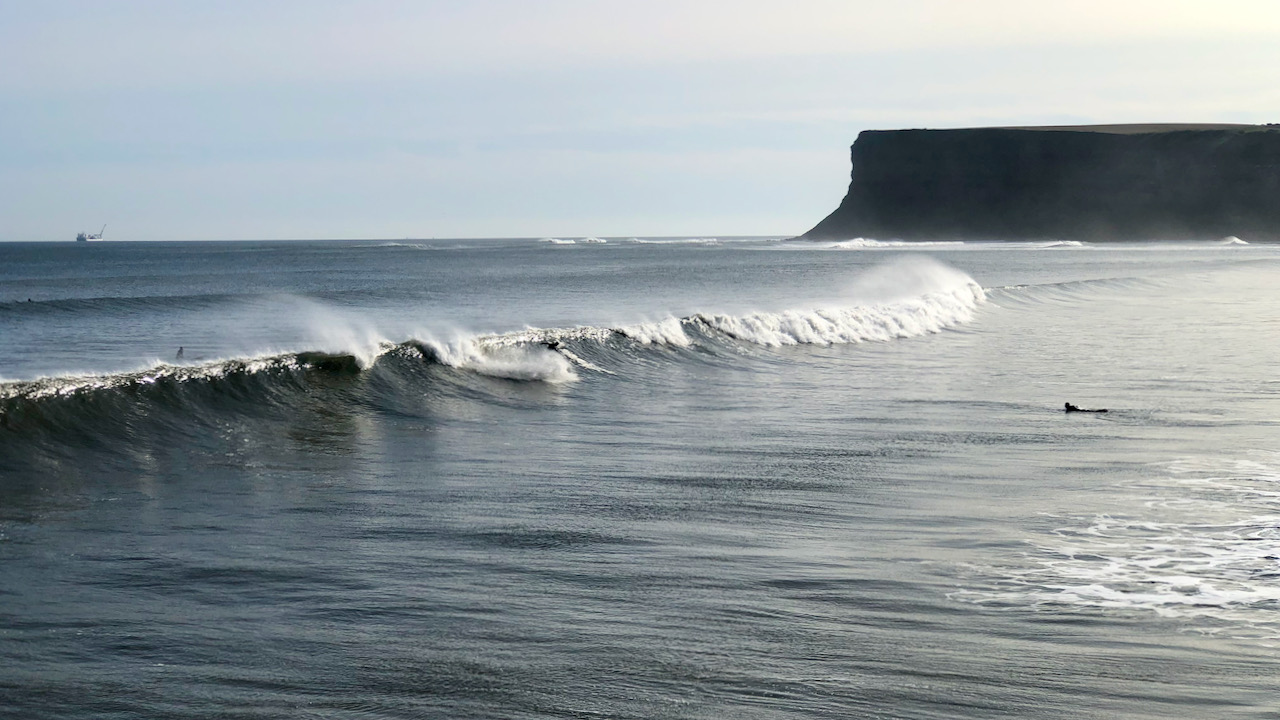Numerous folk were having a refreshing dip at Saltburn this morning, seizing the opportunity presented by the autumn sun’s warm rays and the surging waves. The surfers had donned their wet-suits, which bestowed upon them some protection against the chilly clutches of the North Sea. One fellow strolling back along the shore confessed that it was too rough today.
 Back in 1863, at the opening of Henry Pease’s Zetland Hotel, “Sea Bathing” was a star attraction. Bathing had begun to gain popularity during the 17th century when the health benefits of this practice became apparent. Bespoke facilities emerged for the enjoyment of spa waters, as seen in Bath. People also took to swimming in rivers, mostly men. In fact, nude river swimming was a favoured pastime among men. But as safety concerns grew, restrictions followed suit. When the Cleveland Outdoor Pools were built in Bath in 1815, the Bath Water Act was enacted, which prohibited nude river bathing.
Back in 1863, at the opening of Henry Pease’s Zetland Hotel, “Sea Bathing” was a star attraction. Bathing had begun to gain popularity during the 17th century when the health benefits of this practice became apparent. Bespoke facilities emerged for the enjoyment of spa waters, as seen in Bath. People also took to swimming in rivers, mostly men. In fact, nude river swimming was a favoured pastime among men. But as safety concerns grew, restrictions followed suit. When the Cleveland Outdoor Pools were built in Bath in 1815, the Bath Water Act was enacted, which prohibited nude river bathing.
The Victorians introduced bathing machines, mobile huts where ladies could discreetly change before being cautiously wheeled into the sea. These ladies would descend the steps and timidly dabble their toes in the briny waters, lest they be overwhelmed by its peculiar charm. It was all quite genteel and delicate.
As the 20th century dawned, numerous constraints persisted. One could not simply wade into the sea at will. Payment was usually required. Part of the fee covered changing facilities, as beachgoers were not allowed to change on the shore unless they utilised one of these huts. Some folks attempted to circumvent these rules through a practice known as ‘Macintosh bathing.’ This entailed changing into one’s bathing attire in a seaside hotel, usually just across the road, as changing on the beach itself was verboten1Blackpool’s Seaside Heritage. [n.d.]. Page 14. <https://historicengland.org.uk/images-books/publications/blackpools-seaside-heritage/blackpools-seaside-heritage/>. After donning a Macintosh coat, the individual would dash across the road, cast aside the Macintosh on the beach, and commence their swim. However, in many resorts, even this strategy was deemed unlawful, and fines were imposed for Macintosh bathing. Such was the extent of the regulations.
Following the conclusion of the Great War, swimming as a sport began to gain popularity. The wheels of the beach huts were removed, and they were permanently located on the foreshore. During this period, swimming, rather than mere bathing, gained traction among women as well. The 1920s witnessed the first woman successfully crossing the English Channel. Women’s swimwear underwent development because their previous attire was not suited for proper swimming. The notion of swimming as we now conceive it, a free and open exercise, was only just taking root. This marked the rise of lidos—safe, clean, and mixed swimming facilities. I recall the Bulwell Lido in Nottingham during the early 1960s; it was fed by a spring and exceptionally cold. Perhaps that’s why I remain averse to outdoor swimming to this very day, unless I’m clad in a wet-suit.
- 1Blackpool’s Seaside Heritage. [n.d.]. Page 14. <https://historicengland.org.uk/images-books/publications/blackpools-seaside-heritage/blackpools-seaside-heritage/>

Leave a Reply